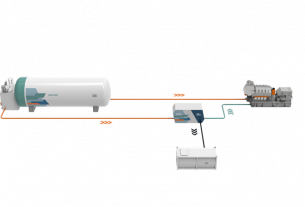United States – Stanford researchers have found a way to make ammonia using water and nitrogen from the air with the help of a catalyst.
Ammonia is used as the primary element in chemical fertilizers for crops. The current method, Haber-Bosch process, uses high pressure and temperature, consuming high energy and emitting ample amounts of carbon dioxide. The new method is eco-friendly, uses less energy and requires no special circumstances to produce ammonia.
Scalable method
The researchers were able to produce ammonia through microdroplets containing water and nitrogen, in the presence of a magnetite-based catalyst, resulting in low energy and low-cost ammonia synthesis. Although the method is at the demonstration stage, if it is scalable, it can have a potential impact on producing ammonia in a sustainable and eco-friendly manner.
The greenhouse gas emissions associated with transporting ammonia from farmlands could be significantly reduced with the new method.




